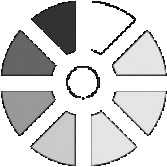SweSAT: Swedish Scholastic Aptitude Test
The Swedish Scholastic Aptitude Test –“SweSAT” (Hogskoleprovet in Swedish) is a standardised test used as a part of the admission procedure at higher education institutions in Sweden. The test is administered by the Swedish Council for Higher Education.
Format of SweSAT
The test has been split into two different parts:
Each part comprises of 80 questions. The two parts have been further quantitative and the verbal parts are both sub-divided into four different sections, each with different kinds types of questions. The test consists of 160 questions in total, sub-divided into four sub-tests, each having 40 questions. A fifth sub-test is also set in order to with the aim of developing new questions for future tests, but however the result of this subtest is not taken into consideration.
All sections are held in one day, a Saturday in April (a spring test) or October (fall test). The tests last between 7–8 hours, including time outs between each section and a lunch break. Aside from the English language reading comprehension test, all sections of the test are held in Swedish language.
Part 1: Quantitative
This part comprises of Mathematics, Quantitative Comparisons, Tables and Maps, and data sufficiency questions.
- Total No. of questions: 80
XYZ – Mathematics
This section assesses the mathematical problem solving capability of the candidates. The questions are from different topics of arithmetic, geometry, statistics, algebra, and function theory.
KVA – Quantitative Comparisons
This section assesses the aptitude and capability of the candidates to draw quantitative comparisons in the topics of arithmetic, geometry, statistics, algebra, and function theory.
DTK – Tables, Diagrams, and Maps
This section evaluates the competency of the candidates to interpret tables, diagrams, and maps. The questions require both the ability to understand, identify, and examine data.
NOG – Data Sufficiency
This section consists of deciding whether adequate information has been offered to solve an arithmetic or geometry problem. It measures the ability to extract logical conclusions.
Part 2: Verbal
This part includes questions based on English Reading Comprehension, Vocabulary and Sentence Completion.
- Total No. of questions: 80
ELF – English Reading Comprehension
This section measures the ability to identify and comprehend a non-fictitious text, often culled from magazines or newspapers. It includes both long as well as short texts. One of the lengthier tests is a "Cloze test", which includes spaces where words have been omitted. This section involves an understanding of the information, following an squabble and making conclusions on the basis of the textual matter given in English.
LAS – Reading Comprehension
This section requires an understanding of the five dissimilar texts given in Swedish and making conclusions on the basis of those texts.
ORD – Vocabulary
This section tests the vocabulary skills of the candidates. It determines whether they know the meaning of concepts and words. The words are of Swedish or foreign origin.
MEK – Sentence Completion
This section examines the ability to plough into words and phrases in context.
The Fifth Subtest
At each test there is specified an extra fifth subtest with the aim of building up new questions for upcoming tests. This part comprises data from the quantitative and verbal sections. The result of this subtest is not considered though.
Registration and Fees
You can register online for the tests through website: www.hogskoleprov.nu. The fee varies every year. Check the official website for more details.
Results and Scoring
The total score for each section are converted into a scale, which ranges from 0.0 referred to as low grade to 2.0 known as the highest grade. A score of 137 to 144 out of 160 represents 2.0.
The mean standard score for the test is about 0.91, and the standard deviation is around 0.40, resulting in about two thirds of the candidates obtaining a result between 0.5 and 1.3, and 95% receiving a result in the interval 0.2-1.7.
Answers to the test are available in newspapers, SVT's text-TV, online at the Swedish Council for Higher Education's website www.uhr.se and official Hogskoleprovet website www.hogskoleprov.nu etc.
 Processing...
Processing...
 Processing...
Processing...